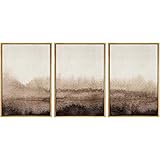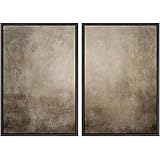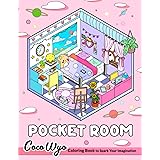Unlock a Fresh Look: Budget-Friendly DIY Kitchen Renovation with Stunning Tile
Transforming your kitchen doesn’t have to break the bank. As showcased in the accompanying video, a thoughtful approach to updating key elements can completely revitalize your space, turning a design dilemma into a triumph. This guide expands on how to achieve a stylish and functional kitchen, much like the “Farmhouse Chic” transformation of Jeremy Rabe’s 1948 farmhouse, focusing on smart choices and efficient DIY techniques.
Embracing the Open Concept: A Foundation for Your Kitchen Renovation
One of the most impactful changes you can make in an older home is opening up the floor plan. Jeremy’s decision to take down the wall between the dining room and kitchen instantly creates a more spacious, inviting atmosphere. This not only enhances the flow of natural light but also makes the home feel more contemporary and connected. An open-concept kitchen encourages family interaction and makes entertaining a breeze, proving that structural changes can yield significant aesthetic and functional benefits in any kitchen renovation project.
Before committing to wall removal, it is crucial to consult with a structural engineer or a qualified contractor. They can confirm if the wall is load-bearing and advise on the proper support structures needed. This initial step, though often overlooked, is foundational to a safe and successful open-concept transformation.
Strategic Updates: Painting Cabinets and Adding New Hardware
Beyond structural changes, small details make a monumental difference. Jeremy demonstrates this perfectly by refreshing his existing cabinets with a coat of white paint and adding new hardware. This budget-friendly DIY kitchen renovation strategy breathes new life into tired cabinetry without the expense of a full replacement. Choosing a classic white paint provides a clean, bright foundation, making the kitchen feel larger and more luminous.
When selecting paint for cabinets, durability is key. Opt for high-quality enamel or cabinet-specific paint designed to withstand daily wear and tear. Proper preparation—cleaning, sanding, and priming—is essential for a smooth, lasting finish. New hardware, whether sleek modern pulls or vintage-inspired knobs, acts as jewelry for your cabinets, effortlessly updating their style and complementing your chosen aesthetic.
The Power of Color: Painting Walls for a Dramatic Effect
The choice of wall color holds immense power in dictating a room’s mood and perceived size. Jeremy’s selection of a beautiful, dark bluish-gray color for his kitchen walls provides a sophisticated contrast to the white cabinets and brightens the overall space. Darker shades can add depth and character, especially in a kitchen with ample natural light or lighter elements like white cabinets and bright new tile. This creates a cozy yet chic ambiance, aligning perfectly with the “Farmhouse Chic” vision.
Considering the undertones of your chosen paint color is important, as they can subtly shift under different lighting conditions. Always test paint swatches on your walls and observe them at various times of day before making a final decision. This ensures the color achieves the desired effect within your specific kitchen environment.
Choosing the Perfect Tile for Your DIY Kitchen Renovation
The selection of the perfect tile is a pivotal moment in any kitchen refresh. Jeremy’s admiration for the beautiful Shaw tile highlights how the right material can elevate the entire design. Tile offers a vast array of possibilities, from classic subway patterns to intricate mosaics, each capable of defining a unique style. Glass tiles, like the ones chosen in the video, reflect light beautifully, adding a touch of elegance and making the kitchen feel more expansive. They are also remarkably easy to clean, a practical benefit for any busy kitchen.
When selecting tile for a backsplash or floor, consider durability, ease of maintenance, and how it harmonizes with your existing elements like countertops and cabinet colors. Ceramic and porcelain tiles are versatile and robust, while natural stone offers a timeless, luxurious feel. For a cohesive look, aim for continuity in style and color palette, even if introducing different textures or patterns.
Revolutionizing Tile Installation with All-in-One Solutions
One of the most exciting innovations in DIY tiling, as Jeremy demonstrates, is the use of all-in-one products like Merkrete Integra Color Grout. This groundbreaking product combines thin-set adhesive and grout into a single bag, streamlining the installation process dramatically. This isn’t just about convenience; it translates directly into significant time and cost savings for your kitchen renovation. Traditional tiling requires separate applications of thin-set to adhere the tiles and then grout to fill the spaces, each with its own drying times. Integra eliminates an entire step, allowing you to install tiles and then quickly move to the finishing, all with one product.
The versatility of Integra Color Grout, available in a variety of colors, allows for seamless integration with any tile choice, ensuring the grout lines enhance rather than detract from your tile design. This product is a game-changer for intermediate DIYers seeking professional results with less complexity.
Step-by-Step Tile Installation with Merkrete Integra
Achieving a professional-looking tile backsplash is entirely within reach for the dedicated DIYer. Follow these steps for an efficient installation, leveraging the benefits of an all-in-one product:
- Preparation is Key: Ensure your wall surface is clean, dry, and free of any grease or debris. Mark out your starting point, typically the center of your largest wall, using a level to draw a straight horizontal line. This ensures your first row of tiles is perfectly level.
- Mixing the Integra Grout: Begin by precisely measuring your water. For a 25-pound bag of Integra, you will need four pints of cool water. Pour the water into a clean mixing bucket first, then gradually add the powder. Use a slow-speed mixer with a paddle attachment to blend the mixture thoroughly until it is smooth and consistent, with no lumps. Allow the mixture to “slake” or sit for 15 minutes, which allows the polymers to fully activate. After this resting period, remix it thoroughly for a minute or two. The consistency should be like thick peanut butter, holding a ridge when a trowel is pulled through it.
- Applying the All-in-One Mixture: Use a notched trowel to apply the Integra mixture to the wall. Hold the trowel at a 45-degree angle to the surface and spread a thin, even coat, ensuring you cover an area manageable enough to tile before the mixture begins to skin over. Jeremy emphasizes horizontal trowel lines; these help create suction and securely grip the tile to the vertical surface, preventing slippage.
- Installing Your Tile: Press each tile firmly into the thin-set mixture on the wall. A slight twisting motion can help ensure full contact. Use tile spacers to maintain consistent grout lines between each tile. Regularly check your work with a level to ensure tiles are straight and even.
- Grouting and Finishing: Once all tiles are installed, use a grout float to firmly press the Integra mixture into the grout lines, ensuring they are completely filled. Angle the float across the tiles to scrape away excess mixture from the tile faces. After approximately 30 to 60 minutes, the Integra should feel firm to the touch and have a dull haze. At this point, use a damp tile sponge with clean water to gently wipe down the tiles, shaping the grout lines as you go. You may need to repeat this step a few times with a clean sponge and fresh water until the grout lines are properly shaped and the tile surface is clean. Once the tile is completely dry, use cheesecloth to buff away any remaining grout haze residue, revealing your sparkling new backsplash.
The Grand Reveal: Bringing Your Kitchen Renovation to Life
With the tile work complete and the kitchen components reassembled, the final touches bring the entire kitchen renovation together. Jeremy’s delight in his “Farmhouse Chic” kitchen showcases the profound satisfaction that comes from a successful DIY project. A few decorative elements – a stylish vase, curated artwork, or new kitchen accessories – can personalize the space and highlight your chosen design aesthetic.
This comprehensive approach to a DIY kitchen renovation, combining smart budget choices with innovative products like all-in-one thin-set and grout, demonstrates that a stunning kitchen transformation is achievable without excessive spending. The integration of paint, hardware, and carefully selected tile creates a cohesive and inviting space, proving that with a little effort and the right materials, you truly can build it better.











